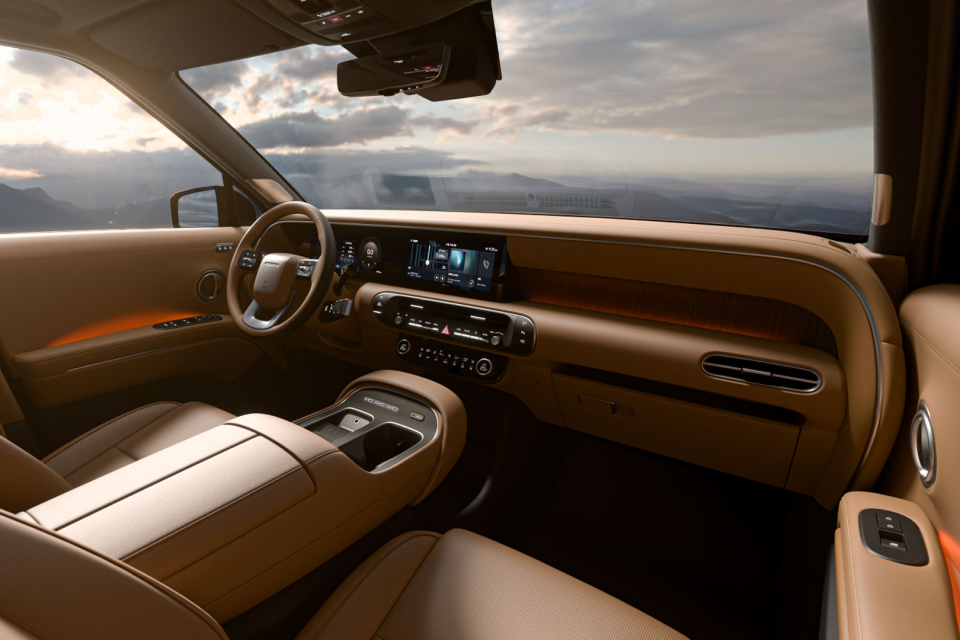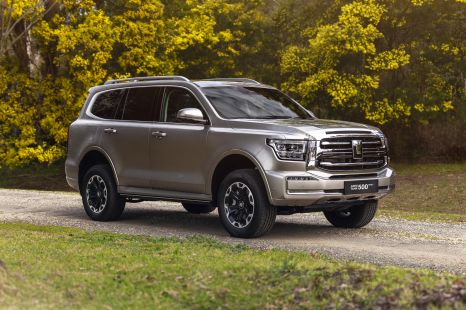

William Stopford
2026 Audi Q6 and SQ6 Sportback e-tron price and specs
22 Hours Ago

News Editor
The second-generation Hyundai Palisade will reportedly stick with a V6 engine but gain turbo-petrol and hybrid options.
That’s according to details published by owners__club_ on Instagram and reshared by The Korean Car Blog, which show a 3.5-litre V6 will replace the current 3.8-litre V6.
A 2.5-litre turbocharged four-cylinder engine will reportedly join the range alongside Hyundai’s new 2.5-litre turbocharged hybrid four-cylinder powertrain.
There’s no mention of a diesel, indicating the Palisade will follow its smaller Santa Fe sibling in ditching this powertrain type.
100s of new car deals are available through CarExpert right now. Get the experts on your side and score a great deal. Browse now.

CarExpert understands the new Palisade will arrive in Australia during 2025.
The Instagram account shared the below figures, prefacing each with “about”.
| 2.5T | 2.5 hybrid | 3.5 V6 | |
|---|---|---|---|
| Total power | 213kW | 246kW | 206kW |
| Total torque | 363Nm | 456Nm | 412Nm |
| 0-100km/h time | 7.2s | 7.5s | 7.3s |
| Fuel efficiency | 9.5L/100km | 6.9L/100km | 10.2L/100km |
The 3.5-litre V6 is down 11kW on power compared to the current model’s 3.8-litre, but pumps out 57Nm more torque.
Unusually, the figures show the Palisade 2.5T to be down 7kW and 59Nm on the Santa Fe 2.5T.

Here’s how the new Palisade will reportedly measure up against the outgoing model:
| DImension | 2026 Palisade | 2025 Palisade |
|---|---|---|
| Length | 5030-5050mm | 4995mm |
| Width | 1975mm | 1975mm |
| Height | 1765mm | 1750mm |
The Palisade owners’ club has shared two different wheelbase measurements on Instagram: 2920mm and 2950mm. For context, the outgoing Palisade has a 2900mm wheelbase.
Hyundai revealed the new Palisade earlier this month, though it stopped short of revealing powertrain specifications or dimensions.
The styling appears even more squared-off than before, with a straightened window line.

The flanks are cleaner than before, though sharp creases above the wheel arches simulate wheel-arch extensions. Beneath these sit wheels as large as 21 inches.
Up front, the segmented grille is replaced by one that appears even wider and includes a mix of narrow and wide horizontal elements.
There’s a chunky take on Hyundai’s ‘pixel’ lighting elements, with five wide daytime running light segments. These bookend headlight clusters that push right up to the grille, further emphasising the width of the car.
The bonnet has sharp, squared-off creasing reminiscent of the sheetmetal above the wheel arches.

New exterior colours include Ecotronic Grey Pearl, Cast Iron Brown Pearl, Galaxy Maroon Pearl, and Crazy Blue Pearl.
Inside, there’s a 12.3-inch digital instrument cluster and 12.3-inch infotainment touchscreen neatly tucked into the dash. On the passenger side, the dashboard appears scooped out and inside there’s striated wood-look trim and ambient lighting elements.
The centre stack features a pod containing what appear to be physical buttons for functions like the stereo, while below this is a pod containing climate controls.
Its centre console is split between what appears to be a shelf at floor level, and a floating ‘peninsula’ containing cupholders, USB-C outlets, and a wireless charging pad.

The door trims have a clean, slab-sided look reminiscent of the Ioniq 5, with ambient lighting glowing from behind the flat armrest.
Interior colours include tan, navy, dark grey and grey two-tone schemes, plus a single-tone black option.
Korean-market models will be offered with either six-, seven- or nine-seat configurations, the latter new for the Palisade and allowing it to qualify for bus lane access there.
We expect only six- and seven-seat configurations to be offered here, and we also expect the hybrid to make the trip here.
Where expert car reviews meet expert car buying – CarExpert gives you trusted advice, personalised service and real savings on your next new car.
William Stopford is an automotive journalist with a passion for mainstream cars, automotive history and overseas auto markets.


William Stopford
22 Hours Ago


William Stopford
3 Days Ago


James Wong
6 Days Ago


Derek Fung
10 Days Ago


William Stopford
12 Days Ago


William Stopford
18 Days Ago